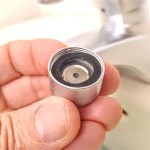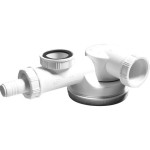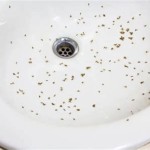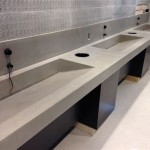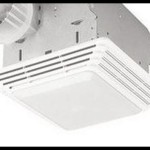Understanding the Bathroom Sink Pop-Up Drain Assembly Gasket
The bathroom sink pop-up drain assembly is a crucial component of any functional sink, responsible for effectively sealing the drain and allowing for the convenient opening and closing of the drain stopper. A key, often overlooked, element within this assembly is the gasket. The gasket's primary purpose is to create a watertight seal between various parts of the assembly, preventing leaks and ensuring the efficient drainage of water. This article provides a comprehensive overview of the bathroom sink pop-up drain assembly gasket, covering its types, function, importance, common issues, and replacement procedures.
The pop-up drain assembly in a bathroom sink is comprised of several distinct parts that work in concert. These usually include the drain flange (the part that sits inside the sink basin), the drain body (which connects to the flange and extends beneath the sink), the tailpiece (which connects to the drainpipe or P-trap), the pivot rod assembly (which controls the pop-up stopper), and, crucially, the gaskets. Each connection point between these components needs a reliable seal to prevent water from escaping.
Leaks in the bathroom sink plumbing are a common household problem that can lead to wasted water, water damage to cabinets and flooring, and potentially mold growth. Addressing leaks promptly and effectively is essential for maintaining a healthy and well-functioning bathroom. Understanding the role of the gasket in preventing these leaks is the first step towards proper maintenance and repair.
The Critical Role of the Gasket in Sealing
The gasket serves as a compressible seal between two surfaces, effectively filling the microscopic gaps and imperfections that exist even on seemingly smooth surfaces. Without the gasket, the vibrations from water flow and the inherent irregularities in the materials used for the drain assembly would inevitably result in leaks. The gasket provides the necessary conformability to create a watertight barrier, ensuring that all water flows through the intended path to the drainpipe. The material of the gasket is chosen for its flexibility, resistance to water damage, and ability to maintain its shape and sealing properties over time.
Different types of gaskets are used within the pop-up drain assembly, each designed for a specific connection point. For example, a gasket is typically positioned between the drain flange and the sink basin, preventing water from seeping around the edge of the drain. Another gasket is often used between the drain body and the tailpiece. The shape and size of each gasket are tailored to the specific joint where it is intended to provide a seal. Failure of any of these gaskets can lead to a leak in the drain assembly.
The compression applied to the gasket is crucial for its effectiveness. When the drain assembly is properly tightened, the gasket is squeezed between the two mating surfaces, deforming slightly to fill any voids. However, over-tightening can also damage the gasket, causing it to deform excessively or even tear. Therefore, proper installation and tightening are essential for ensuring a long-lasting and leak-free seal. The torque applied during tightening should be sufficient to compress the gasket but not so excessive as to damage it.
Types of Gaskets Used in Pop-Up Drain Assemblies
Several materials are commonly used for manufacturing gaskets in bathroom sink pop-up drain assemblies. The choice of material depends on factors such as cost, durability, chemical resistance, and temperature range. Some of the most common materials include:
Rubber: Rubber gaskets, often made from neoprene or a similar synthetic rubber compound, are known for their flexibility and ability to conform to irregular surfaces. They offer good resistance to water and many common household chemicals. Rubber gaskets are a cost-effective option and are widely used in various plumbing applications.
Silicone: Silicone gaskets are highly resistant to temperature extremes and chemicals, making them a durable and long-lasting option. They also maintain their flexibility over a wide range of temperatures. Silicone gaskets are often preferred in applications where high performance and reliability are required.
Fiber: Fiber gaskets are typically made from compressed cellulose or other fibrous materials. They are less flexible than rubber or silicone gaskets and are more prone to degradation when exposed to water for extended periods. Fiber gaskets are generally used in applications where cost is a primary concern.
Plastic: Certain plastics, such as polyethylene, are sometimes used for gaskets in drain assemblies. These plastic gaskets are inexpensive and offer good resistance to water. However, they may be less flexible and durable than rubber or silicone gaskets.
The shape of the gasket also varies depending on its specific application within the drain assembly. Common shapes include flat washers, tapered rings, and O-rings. Flat washers are used for sealing flat surfaces, while tapered rings are used for sealing conical surfaces. O-rings provide a circular seal and are often used in groove-type fittings.
Common Issues and Replacement Procedures
Despite being relatively simple components, gaskets in the pop-up drain assembly can fail due to various factors. Over time, exposure to water, chemicals, and temperature fluctuations can cause the gasket material to degrade. Gaskets can also become brittle and crack, losing their ability to create a tight seal. In addition, improper installation, such as over-tightening, can damage the gasket and lead to premature failure.
The most obvious sign of a faulty gasket is a leak in the drain assembly. Water may drip from the connections between the drain flange, drain body, and tailpiece. If a leak is suspected, it is essential to inspect the gaskets carefully for any signs of damage, such as cracks, tears, or deformation. The area around the gasket should also be inspected for mineral deposits or corrosion, which can indicate a water leak.
Replacing a faulty gasket is a relatively straightforward process that can be accomplished with basic plumbing tools. The first step is to shut off the water supply to the sink. Then, the drain assembly needs to be disassembled to access the gasket. This typically involves loosening the slip nuts that connect the various components of the assembly. Once the assembly is disassembled, the old gasket can be removed and a new one installed. It is important to ensure that the new gasket is properly seated and aligned. The assembly should then be reassembled and the slip nuts tightened. Care should be taken not to over-tighten the nuts, as this can damage the new gasket. After reassembly, the water supply can be turned back on and the drain assembly inspected for leaks. If any leaks are detected, the connections should be tightened further until the leak is resolved.
When replacing gaskets, it is essential to use the correct type and size for the specific application. Using an incorrect gasket can result in a poor seal and ongoing leaks. It is also advisable to replace all gaskets in the drain assembly whenever one gasket fails, as other gaskets may also be nearing the end of their lifespan.
Prevention is better than cure. To prolong the life of the gaskets, avoid using harsh chemicals or abrasive cleaners in the sink, as these can damage the gasket material. Regularly inspect the drain assembly for leaks and address any problems promptly. Applying a small amount of plumber's grease to the gaskets during installation can also help to improve the seal and prevent them from drying out and cracking.
In conclusion, the bathroom sink pop-up drain assembly gasket plays a critical role in maintaining a watertight seal and preventing leaks. Understanding the types of gaskets, their function, common issues, and replacement procedures is essential for homeowners. By following proper installation and maintenance practices, the lifespan of the gaskets can be extended, ensuring a leak-free and functional bathroom sink drain.

Delta Bathroom Sink Pop Up Drain Assembly Gasket Rp6142 The Home Depot

Bwe Bathroom Sink Pop Up Drain With Overflow In Matte Black A 9p 01 B The Home Depot

Pin On Cleaning

Vigo Vessel Bathroom Sink Pop Up Drain And Mounting Ring
Drain Spacer Gasket Kit For Bathroom Sinks

Drain Stopper Bathroom Sink Silicone Gasket Kitchen For Home Basin Without Hole Com

Serene Vally Pop Up Drain For Ceramic Bathroom Sink With Overflow Sol Valley

Everbilt 2 In Rubber Bathroom Pop Up Drain Washer Black 866100 The Home Depot

Buy Bathroom Sink Pop Up Drain With Extended Thread Kraus

How To Replace Or Maintain A Sink Pop Up Drain Assembly
Related Posts


